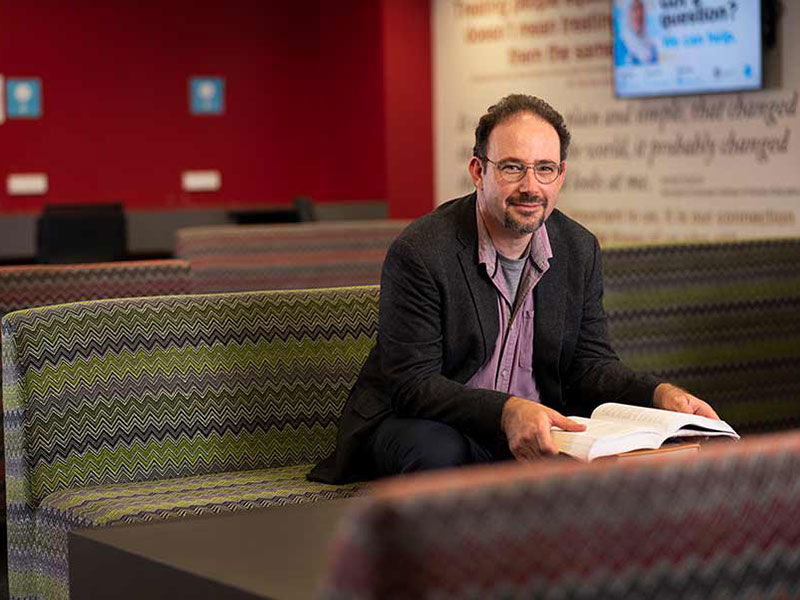Researcher Highlights
Discovering the roots of persecution of the Roma
Sacha Davis
Dr Sacha Davis’ research seeks to understand why the Roma of Central and Eastern Europe have been discriminated against for hundreds of years, a process that’s continuing today.

The Roma came to Europe in the late 14th Century via the Middle East from India. They immediately stood out with their mobile lifestyle and colourful clothing that seemed ‘exotic’ to other Europeans. They were highly skilled artisans who would travel around servicing villages, but were unwelcome competitors in the towns of Central Europe that already had an established system of guilds under the Holy Roman Empire.
It was here that the roots of stereotypes and negative attitudes towards the Roma developed and are still evident today in discriminatory policies. Dr Sacha Davis is researching why and how these beliefs developed.
“The people of this time were accustomed to living in small, quite closed communities where outsiders came and went, and often a sense of danger accompanied these outsiders. Although Roma (sometimes referred to as ‘Gypsies’, although that term is increasingly considered offensive) brought with them a lot of valued goods and skills, they were sometimes accused of petty crimes. Many practiced fortune telling and sold folk medicines, which could lead to accusations of witchcraft,” Sacha said. “Negative stereotypes of Roma as lazy or dishonest also became excuses to pay them poorly for their valuable work, suppressing wages.
Sacha says that from the 18th Century the persecution of the Roma began to intensify, and much of the negative attention came from the state.
“The big change that happened around then is the emergence of the modern state. This is when the state began to want to know where people lived so they knew who they could tax and who was available for military service; however the itinerant Roma did not fit in with this strategy.”
“One such state was the Habsburg Empire, which until the First World War encompassed large swathes of Central and Eastern Europe, including Hungary where many Roma lived. Under Empress Maria Theresa, the state began to remove Roma children from their parents on the pretext that they were not fit to care for them. The goal was to assimilate the Roma, to make them disappear as a people. It is reminiscent of Australia’s Stolen Generations and severely impacted the individuals involved. It was part of a model for ‘reform’ of the Roma that was imitated in other countries. Furthermore, the rhetoric of Roma as bad parents that was used to justify the removals continues to be influential today.”
Sacha’s journal article Competitive Civilizing Missions: Hungarian Germans, Modernization, and Ethnographic Descriptions of the Zigeuner before World War I examines writings by prominent Hungarian-German scholars who illustrate the way that Hungarian and German elites cast Roma as primitive in an effort to legitimise their different visions of ‘reform’ programs for the Roma.
Another journal article examines descriptions of Romani costume in travel narratives written by predominantly British writers visiting Hungary, believed to be the site of especially ‘pure’ Romani culture, during the long nineteenth century. These descriptions provided key sources of information on the peoples of East Europe for the British public, and reinforced and disseminated East European stereotypes about the Roma to English-speaking audiences.
Sacha says the Roma are the targets of modern-day discrimination right across Europe, often impacting on Romani children especially.
“Romani children are still disproportionately more likely to be removed from their parents. The incidence of Romani children being put into lower education classes because of their heritage is also common. Many Romani children are excluded from school entirely. Adults also experience many forms of discrimination. For example, in Britain and Ireland we see local councils being uncomfortable with the movement of Roma through their areas and the closure of campsites.”
“It’s very important to uncover where and how these problematic stereotypes and discriminatory practices originated and why so many powers tried to legitimise their control of the Roma over hundreds of years because the effect is still very much felt today.”
German Speakers in Newcastle
In a project that is closer to home, Sacha is reaching out to German speakers living in Newcastle in an effort to understand what it means to be a German in Newcastle.
“Historically German speakers have come to Newcastle in relatively large numbers with Newcastle having the highest level of German migration in Australia outside the capital cities,” Sacha said.
“I’m interested in what it means to grow up in Newcastle with a German-speaking heritage, culture and language. I’m particularly interested in people’s sense of connection to their German heritage, and to the German language. Many of the German speakers who came to Newcastle came from Eastern Europe so that is how this ties in with my other research.”
Sacha, along with his UON colleague Dr. Jaime Hunt, have had some interesting discussions with descendants of Jewish refugees from Nazi Germany, Germans displaced by the advance of the Red Army in Eastern Europe at the end of the war, and refugees from Communist East Germany.
“We found that their German culture was very important to them and that there were a diverse range of ideas about what it means to be a German living in Newcastle,” he said.
The duo are keen to talk to more Novocastrians with a German-speaking heritage to broaden their study.
“I recently gave a talk on our research at the Lake Macquarie Library for History Week and it was very interesting to talk to the people who came up to me afterwards. I’d love for more people with German-speaking heritage to get in contact with me.”
The University of Newcastle acknowledges the traditional custodians of the lands within our footprint areas: Awabakal, Darkinjung, Biripai, Worimi, Wonnarua, and Eora Nations. We also pay respect to the wisdom of our Elders past and present.